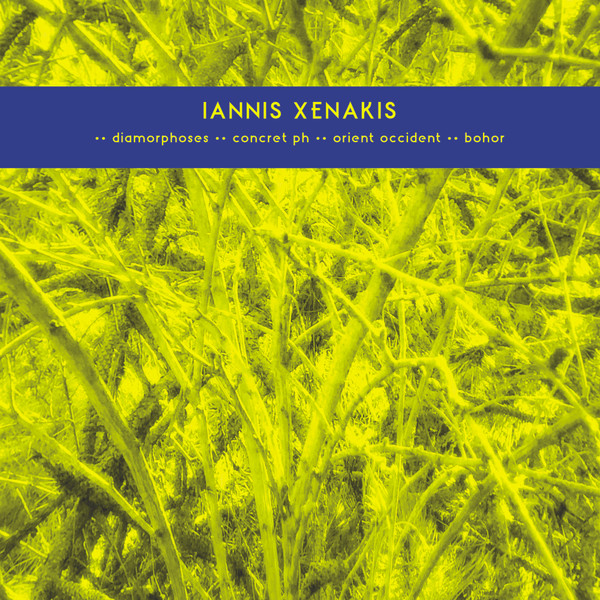
 |
|
 |
Format: LP Label & Cat.Number: Karlrecords KR089 Release Year: 2022 Note: a collection of XENAKIS early electroacoustic (master-)pieces (1957-1962) , incl. Diamorphoses, his one and only "Musique Concrete" tape piece made out of many self recorded sound snippets... plus: the famous "Concret PH" (1958), "Orient Occident" (1960), "Bohor" (1962)...
Price (incl. 19% VAT): €20.00 More Infohttps://karlrecords.bandcamp.com/album/diamorphoses-concret-ph-orient-occident-bohor"Iannis Xenakis's early electroacoustic works define already the compositional space he is using later in his mature, almost one-hour long works like Persepolis or La Légende d'Er. After arriving in Paris as a Greek refuge in 1947, Xenakis quickly found a work as construction engineer with the architect Le Corbusier. He tried in vain for several years to become a member of the Groupe De Musique Concrète (GRM) and thus to gain access to the electroacoustic studios at the French radio. Pierre Schaeffer accepted him only when not only Messiaen pushed for it, but also the conductor Hermann Scherchen lobbied for him. Diamorphoses was his first attempt at composing musique concrète and was to remain his only one. He carefully recorded small sounds and worked on them systematically in weeks of tape-snapping. But he also combined sound material that presumably came from the GRM's Sonothèque, and here his fable for powerful sound masses was already apparent. Concret Ph originally was a sound installation: as Le Corbusier's assistant, he had been allowed to completely design the architecture of the pavilion for the Brussels World's Fair 1958, but his music was only to serve as a break filler between the repetitions of the main attraction: the Poème électronique by Edgar Varèse with projections by Le Corbusier. Under the title Interlude Sonore, Xenakis created a tape consisting of the most minimal tape snippets sticked together and got something that sounded almost like the tickling of glowing coal. Xenakis anticipated granular synthesis in analog tape form: the combination of little sound grains giving birth to a new sound. Orient Occident is an extract from music for a documentary film about the encounter of Eastern and Western cultures, shortened by about half. Xenakis had also used non-Western music for it, most of which is absent from the electroacoustic piece -- and yet even here one finds a reference to his many adaptations of ethnological music. Bohor caused -- as Michel Chion put it -- the "greatest scandal of electroacoustic music" -- on the occasion of its performance 1968 at the GRM in Paris. Curiously, hardly anyone noticed the piece when it was premiered in 1962. Xenakis simultaneously played four stereo tapes at extreme volume on eight speakers positioned around the audience, creating an ecstatic sound experience: close-ups of Persian jewelry are used, and large thunderbolts and stringed instruments like those built at the GRM by the Baschet brothers at the time the piece was written." |
| © 2007 Drone Records | | Celler Strasse 33, 28205 Bremen, Germany | Privacy and cookies policy | Impressum / Allgemeine Geschaftsbedingungen / Haftungsausschluss | Links to the scene |